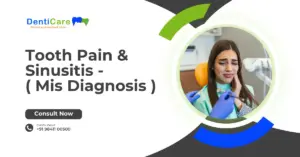One of most important part of medical treatment is making a correct diagnosis. Improper diagnosis will lead to wrong treatment which results no relief for the patient from the illness
Golden Rules of Diagnosis
- Asking thorough history and nature of the primary complaint
- Duration of illness or pain
- Reliving or aggravating factors
- Physical examination of the patient
- Necessary radiographic or other tests
After analysing all the above factors diagnosis is made , and based on the diagnosis treatment is planned .
Mis-diagnosis of Sinusitis and Tooth Ache
Failing to ask relevant history of the problem could lead to wrong treatment. One such issue can between sinusitis and Upper jaw molar teeth pain .
What is Sinusitis?
Sinuses are the air filled cavities in our skull. Inflammation or infection of these cavities can be termed as sinusitis . There are 4 major sinuses in our skull .
Maxillary Sinus
Our focus here on the maxillary sinus which is the closest sinus to the upper jaw back teeth . Lower border of the maxillary sinus and roof of the upper jaw molars is separated by only a thin wall of bone or in some areas just soft tissue .Because of this close anatomical relationship between maxillary molar teeth( Upper jaw back teeth ) and maxillary sinus , infection of teeth can show symptoms of sinus pain , cheek pain , headache and ear pain. Likewise the inflammation of the sinus can reflect as tooth ache .
Upper jaw teeth root tip just below the sinus wall
What is the message here
- do not self medicate in any circumstances
- if you have recent cold ,sinusitis , it can mimic tooth ache
- on the other hand if you are experiencing frequent sinus problem it could be due to tooth infection as well , ask your ENT doctor for dentist referral
Read Also: Tooth Pain- Chapter 1





